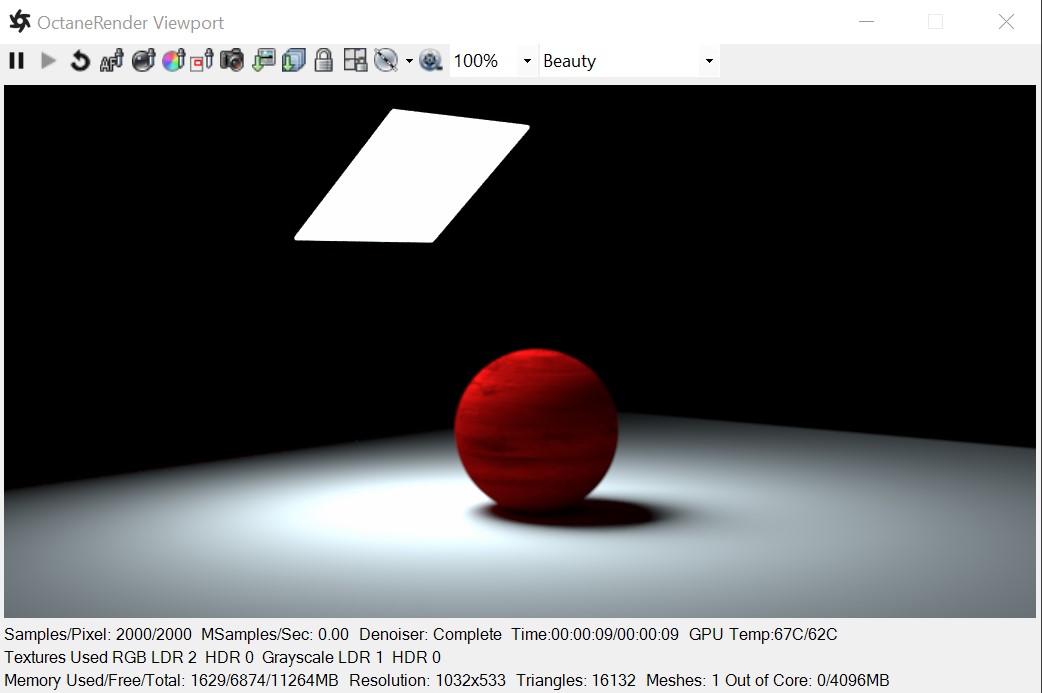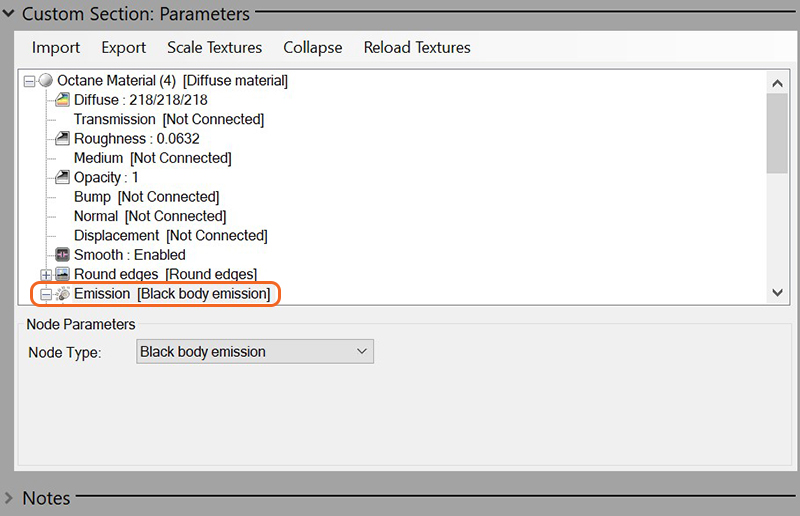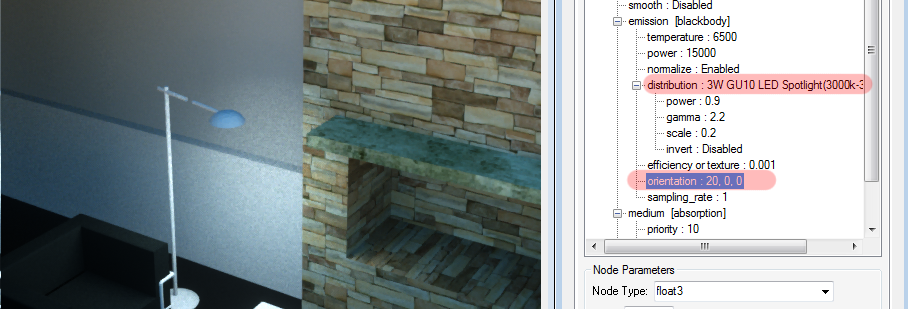
A Mesh Emitter is a polygon object that emits light into a scene (figure 1). This is possible by applying a DiffuseAmount of diffusion, or the reflection of light photons at different angles from an uneven or granular surface. Used for dull, non-reflecting materials or mesh emitters. material to the Mesh object, and then connecting a Black BodyAn opaque object that emits thermal radiation. In Octane, this is used to designate illumination properties for mesh emitters. or Texture emission node to the Diffuse materialUsed for dull, non-reflecting materials or mesh emitters.'s Emission channel (figure 2).

Figure 1: Applying emission properties to a Rhino Plane object.

Figure 2: Accessing the Emission parameter of a Diffuse material.
It is highly recommended that all emitter materials be setup with an IESAn IES light is the lighting information representing the real-world lighting values for specific light fixtures. For more information, visit http://www.ies.org/lighting/. distribution. This allows the emission of light to be distributed to certain parts of the scene.

Figure 1: With no IES file plugged into the “distribution” pin, the light spreads equality in all directions from the lamp.

Figure 2: With an IES distribution file plugged into the “distribution” pin (as an “image” node), the light now only goes down. The direction of light can be controlled by the “orientation” pins, or the Rotation pin in the Transform of the Spherical Projection.
It is best to use a single polygon emitter plane, facing directly down. Set the Opacity to 0. Do not rotate the plane, since doing so may cause self shadowing on the emission.
The intensity of the emitter is inversely proportional to the number of polygons in the Octane Mesh object. Since non-live, non-block instance emitters are in the main geometry mesh object, they will have many polygons that will reduce the intensity. Live or Block emitters on the other hand have their own pin on the Octane Geometry Group node. since there is only the emitter geometry in that node this makes a higher emission.
IES files can be downloaded from various sources.